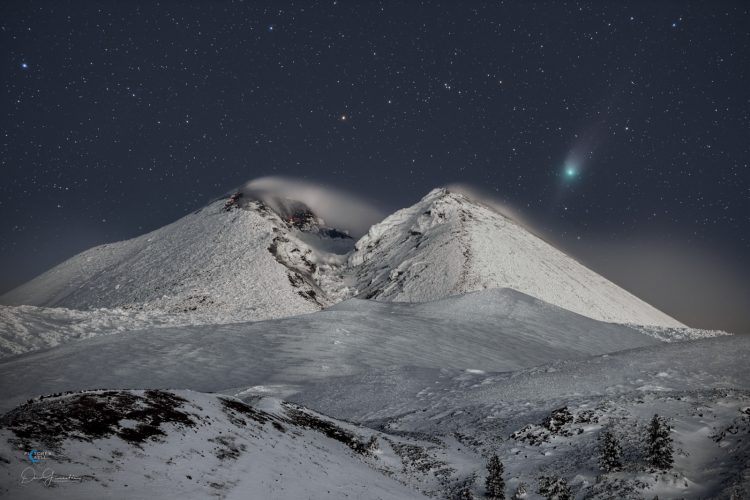Comet 2022 E3 Above Snowy Mount Etna
Description
As seen on Astronomy Picture of the Day. A photo composite of multiple exposures. From the photographer: “Perhaps it is not wrong to say that comets are the most fascinating objects in the sky. Although in the past they have been interpreted as signs that heralded possible misfortune, today we know that they are objects mainly made up of ice, dust and rocks. It was Giotto who give us a different image by frescoing a comet in the Adoration of the Magi in the Scrovegni chapel in 1303. Since then, this representation has remained imprinted in the collective memory to the point of identifying the guiding star of the magi with the star known as the “comet”. several elements contribute to the fascination of these objects: certainly the rarity with which comets appear in the sky, their difficulty in being seen with the naked eye but above all the beauty of the tail and the crown when they manage to be observed among the infinite stars of the firmament Today we are lucky enough to be able to witness the spectacle of comet 2022 E3 (ZTF) which is located near the north celestial pole. It is not easy to admire it but it is enough to have binoculars and a little patience that it will be possible to distinguish the glow of its hair and its tail. Animated by the desire to photograph it, I took advantage of the only night with clear skies that occurred in this last ten days of January. My destination? Snowy Etna! Although it was not difficult to reach the position from which to resume the comet, the atmospheric conditions were certainly prohibitive. During the night the temperature dropped to -8°C at an altitude of 2000mt, an exceptionally cold temperature for Sicily! However, the landscape was breathtaking: an expanse of soft snow disturbed only by some fox and rabbit footprints. The branches of the trees bent under the weight of the snow but, above all, the South East crater was completely covered in snow. Its view is breathtaking, expressing, in a single image, a feeling of strength and delicacy. Looking at it, it is possible to see its internal walls through the fracture that caused part of the conical building to collapse. Some hot spots appear in the dark: they are fumaroles from which volcanic vapors come out… and in all this, the beauty of the sky with the splendid comet rising from the side of the volcano. It shines thanks to a beautiful turquoise green crown and is embellished with a long tail and a small anticoda and hundreds of stars that act as a probe in the sky.”
Technical details: Canon 6d, Sigma 150-600 mm, f/7.1,
Landscape: 2 shots, iso 320, 180 sec
Sky: 27 tracked shots, iso 3200, 45 sec, total integration time: 1215 sec, Fornax Mount Lighttrack II + flat field + dark flat field + dark frame

comments (1)